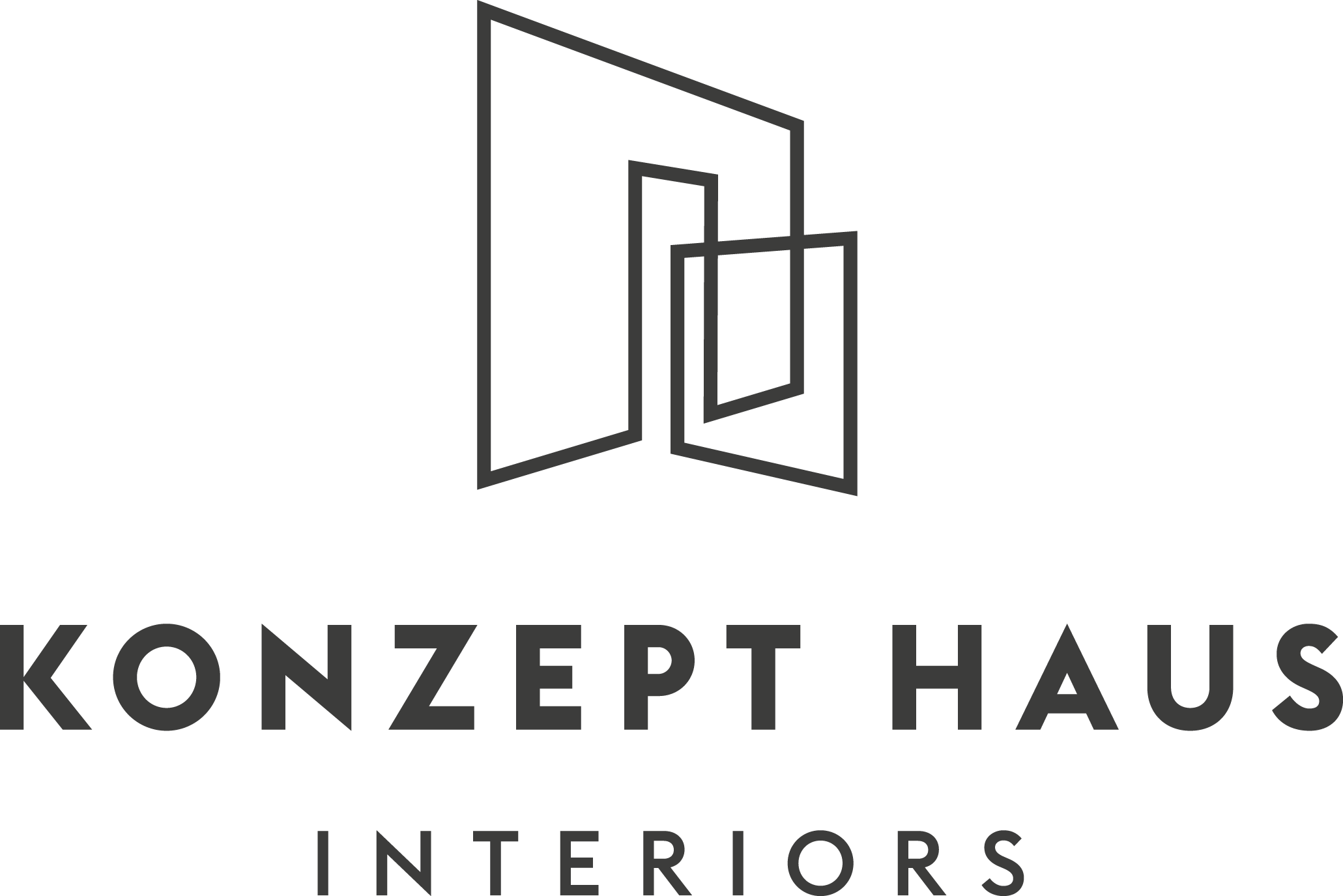MATERIALS
As individuality and high quality are among our core values, we take this into account when selecting our manufacturers. They are taking care of highest quality standards in all different kind of materials and surfaces, no matter if it is the visible surface or hidden structure part.
Due to countless varieties of materials we want to explain you the most important materials with the most relevant facts. Specific detailed information like fire retardance, commercial use, anti-allergic, extra high weight loading, extreme climate exposes, outdoor use etc. are available on request.
Fabric
There are millions of different fabrics on the market. Properties like material, abrasive turs, wash ability, peeling effect etc. are recommended on the swatches. The price of a fabric does not necessarily say anything about its robustness and durability, but can express other quality criteria, such as the exclusivity and elegance of the materials used, for example (silk) the refinement of the printing or weaving process, the high aesthetic value or the extreme fineness.
CARE & MAINTENANCE
Care and maintenance can be compared to daily human hygiene. Dirt formed in daily use (house dust, breadcrumbs, pills, etc.) is removed in regular care and maintenance through regular vacuuming (low suctioning capacity) with a normal household vacuum cleaner with an upholstery brush. You have to use a nozzle with soft brushes for velour and flat fabrics and work in the direction of the nap. Then brush off with a soft brush (e.g. clothes brush).
Stains are removed best immediately after they have formed; it is important that spilled liquids are dabbed off immediately with absorbent kitchen paper or cloth – not rubbed! – so that they cannot even penetrate the fabric. The textile covering materials exhibit the highest variety in quality, materials, designs and colors. Individual product information is especially important in this case. Microfiber cloths, steam cleaners or irons should not be used!
Different materials, blends and manufacturing processes lead to all different kind of cover material. Flat woven fabrics combine any kind of yarn and color for a huge variety. Velour is highly durable and long lasting but sitting imprints can occur in a shimmery, slightly darker effect. They are soft and warm easy to treat and inexpensive.
Fabric
There are millions of different fabrics on the market. Properties like material, abrasive turs, wash ability, peeling effect etc. are recommended on the swatches. The price of a fabric does not necessarily say anything about its robustness and durability, but can express other quality criteria, such as the exclusivity and elegance of the materials used, for example (silk) the refinement of the printing or weaving process, the high aesthetic value or the extreme fineness.
CARE & MAINTENANCE
Care and maintenance can be compared to daily human hygiene. Dirt formed in daily use (house dust, breadcrumbs, pills, etc.) is removed in regular care and maintenance through regular vacuuming (low suctioning capacity) with a normal household vacuum cleaner with an upholstery brush. You have to use a nozzle with soft brushes for velour and flat fabrics and work in the direction of the nap. Then brush off with a soft brush (e.g. clothes brush).
Stains are removed best immediately after they have formed; it is important that spilled liquids are dabbed off immediately with absorbent kitchen paper or cloth – not rubbed! – so that they cannot even penetrate the fabric. The textile covering materials exhibit the highest variety in quality, materials, designs and colors. Individual product information is especially important in this case. Microfiber cloths, steam cleaners or irons should not be used!
Different materials, blends and manufacturing processes lead to all different kind of cover material. Flat woven fabrics combine any kind of yarn and color for a huge variety. Velour is highly durable and long lasting but sitting imprints can occur in a shimmery, slightly darker effect. They are soft and warm easy to treat and inexpensive.
Cotton
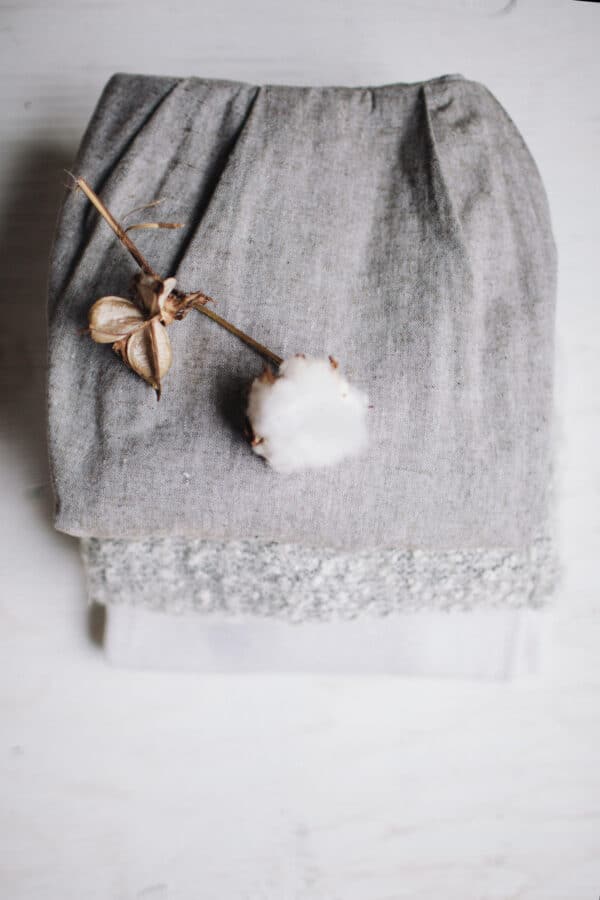 Cotton is a natural fiber and is commonly used for upholstery, as it is very comfortable on the furniture. It is resistant to fading and wearing problems. Cotton is also used in blends with synthetic fibers, adding texture and durability but these blends are somewhat less resistant to wrinkling and soiling. Pure cotton is a better choice for upholstery. Cotton is durable and good for daily use.
Cotton is a natural fiber and is commonly used for upholstery, as it is very comfortable on the furniture. It is resistant to fading and wearing problems. Cotton is also used in blends with synthetic fibers, adding texture and durability but these blends are somewhat less resistant to wrinkling and soiling. Pure cotton is a better choice for upholstery. Cotton is durable and good for daily use.
Wool
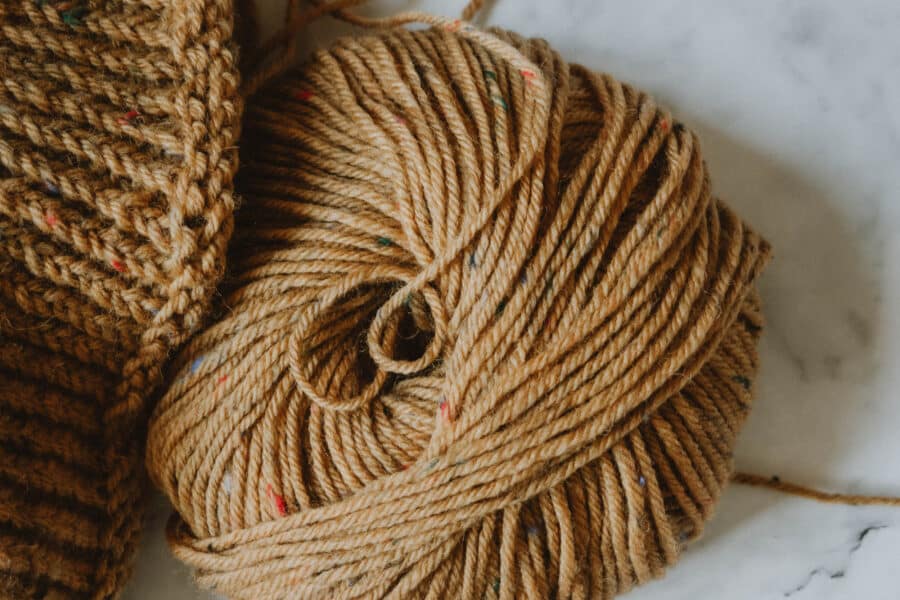 Wool is a very comfortable natural fabric. It reacts well to treatment and dyeing. Wool is fire resistant and does not need any chemical treatment. It is environment-friendly durable and long-lasting. Wool can be blended with other synthetic fiber as well. Blends of wool are more durable and easier to clean. Blends are resistant to pilling, wrinkling, soiling, and fading.
Wool is a very comfortable natural fabric. It reacts well to treatment and dyeing. Wool is fire resistant and does not need any chemical treatment. It is environment-friendly durable and long-lasting. Wool can be blended with other synthetic fiber as well. Blends of wool are more durable and easier to clean. Blends are resistant to pilling, wrinkling, soiling, and fading.
Linen
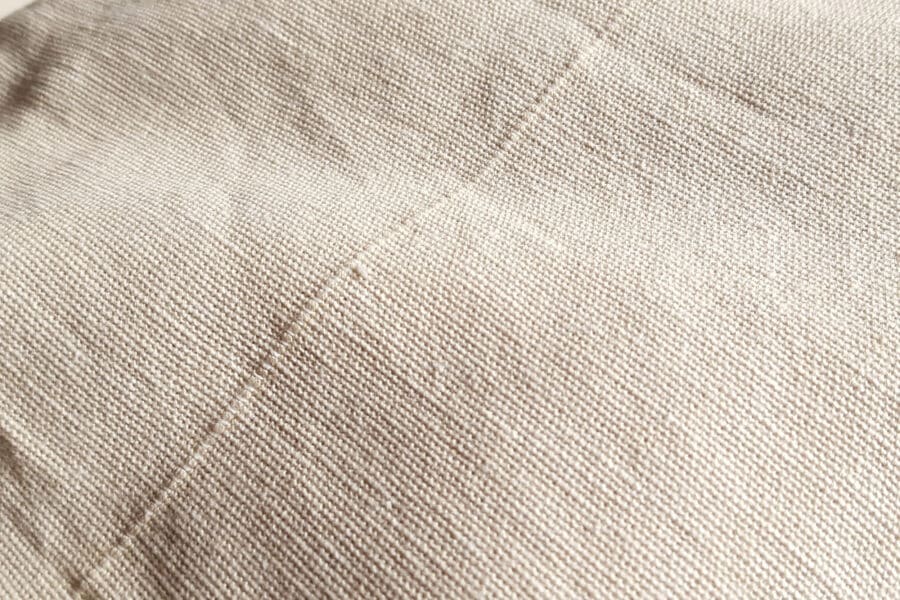 Linen is a popular natural fiber used for upholstery. It is mostly used in blends with other natural fibers to make it more resistant to wrinkling. Linen upholstery needs to be kept informal and adult areas as it might get wrinkles and scratches otherwise. Linen upholstery needs to be cleaned by professionals in order to avoid shrinkage. It is resistant to fading and pilling.
Linen is a popular natural fiber used for upholstery. It is mostly used in blends with other natural fibers to make it more resistant to wrinkling. Linen upholstery needs to be kept informal and adult areas as it might get wrinkles and scratches otherwise. Linen upholstery needs to be cleaned by professionals in order to avoid shrinkage. It is resistant to fading and pilling.
Polyester
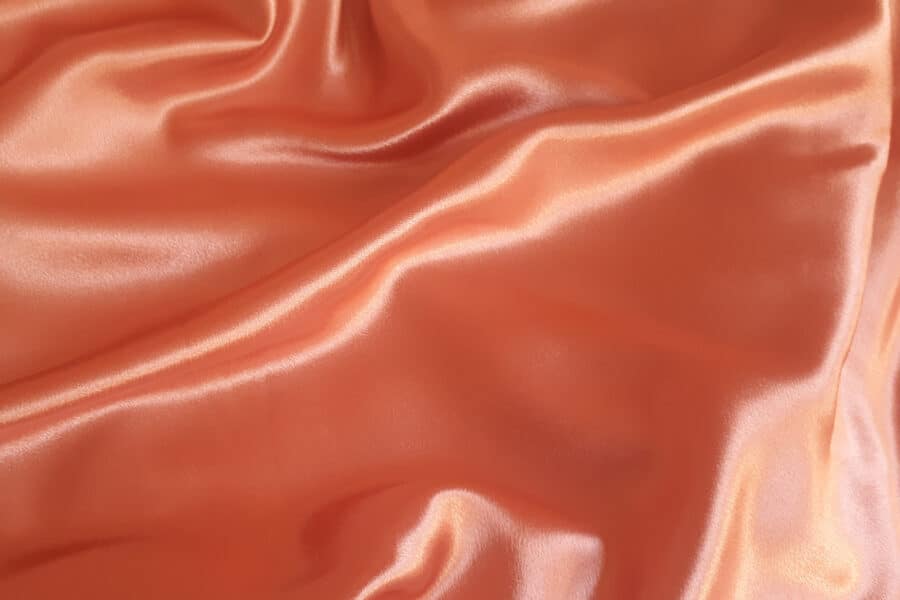 Polyester or microfiber is one of the synthetic fibers that are used commonly for upholstery purposes. Polyester is very soft and comfortable. Cleaning the polyester upholstery is very easy. Polyester fabric is commonly used in blends with other synthetic or natural fabrics. Blending polyester with other fabrics increases the durability of the fabric and offers a wide variety of colors, touching and other properties. Mostly the dark colors are used as the stains do not appear as much as in the lighter colors. Polyester upholstery is easily cleanable and long lasting if it is well maintained.
Polyester or microfiber is one of the synthetic fibers that are used commonly for upholstery purposes. Polyester is very soft and comfortable. Cleaning the polyester upholstery is very easy. Polyester fabric is commonly used in blends with other synthetic or natural fabrics. Blending polyester with other fabrics increases the durability of the fabric and offers a wide variety of colors, touching and other properties. Mostly the dark colors are used as the stains do not appear as much as in the lighter colors. Polyester upholstery is easily cleanable and long lasting if it is well maintained.
Cotton
 Cotton is a natural fiber and is commonly used for upholstery, as it is very comfortable on the furniture. It is resistant to fading and wearing problems. Cotton is also used in blends with synthetic fibers, adding texture and durability but these blends are somewhat less resistant to wrinkling and soiling. Pure cotton is a better choice for upholstery. Cotton is durable and good for daily use.
Cotton is a natural fiber and is commonly used for upholstery, as it is very comfortable on the furniture. It is resistant to fading and wearing problems. Cotton is also used in blends with synthetic fibers, adding texture and durability but these blends are somewhat less resistant to wrinkling and soiling. Pure cotton is a better choice for upholstery. Cotton is durable and good for daily use.
Wool
 Wool is a very comfortable natural fabric. It reacts well to treatment and dyeing. Wool is fire resistant and does not need any chemical treatment. It is environment-friendly durable and long-lasting. Wool can be blended with other synthetic fiber as well. Blends of wool are more durable and easier to clean. Blends are resistant to pilling, wrinkling, soiling, and fading.
Wool is a very comfortable natural fabric. It reacts well to treatment and dyeing. Wool is fire resistant and does not need any chemical treatment. It is environment-friendly durable and long-lasting. Wool can be blended with other synthetic fiber as well. Blends of wool are more durable and easier to clean. Blends are resistant to pilling, wrinkling, soiling, and fading.
Linen
 Linen is a popular natural fiber used for upholstery. It is mostly used in blends with other natural fibers to make it more resistant to wrinkling. Linen upholstery needs to be kept informal and adult areas as it might get wrinkles and scratches otherwise. Linen upholstery needs to be cleaned by professionals in order to avoid shrinkage. It is resistant to fading and pilling.
Linen is a popular natural fiber used for upholstery. It is mostly used in blends with other natural fibers to make it more resistant to wrinkling. Linen upholstery needs to be kept informal and adult areas as it might get wrinkles and scratches otherwise. Linen upholstery needs to be cleaned by professionals in order to avoid shrinkage. It is resistant to fading and pilling.
Polyester
 Polyester or microfiber is one of the synthetic fibers that are used commonly for upholstery purposes. Polyester is very soft and comfortable. Cleaning the polyester upholstery is very easy. Polyester fabric is commonly used in blends with other synthetic or natural fabrics. Blending polyester with other fabrics increases the durability of the fabric and offers a wide variety of colors, touching and other properties. Mostly the dark colors are used as the stains do not appear as much as in the lighter colors. Polyester upholstery is easily cleanable and long lasting if it is well maintained.
Polyester or microfiber is one of the synthetic fibers that are used commonly for upholstery purposes. Polyester is very soft and comfortable. Cleaning the polyester upholstery is very easy. Polyester fabric is commonly used in blends with other synthetic or natural fabrics. Blending polyester with other fabrics increases the durability of the fabric and offers a wide variety of colors, touching and other properties. Mostly the dark colors are used as the stains do not appear as much as in the lighter colors. Polyester upholstery is easily cleanable and long lasting if it is well maintained.
Leather
A natural artisanal material used since prehistoric times. Leather has a refined timeless luxury that no other material can replicate. Quality leather is an exquisite durable material that will offer countless years of comfort with a long-lasting sophisticated aesthetic. The leather upholstery looks amazing in your house and is the best choice for houses with pets and children, as it is easy to clean.
While leathers may seem similar on the surface, not all leathers are created equal. Leather can vary greatly in quality, how it looks, feels and how it performs. Every piece of natural leather has its own individual natural marks like scars, structure folds, brand marks and coloring. It is very resistant against manual strain but has a little light fastness and low rub fastness. These natural irregularities are not beauty defects, but evidence of authenticity and breathing live. The leather will age and change with you for a very long time if treated regularly and carefully according to the manufacture instructions.
CLEAN & CARE
Clean a leather furniture from time to time with a vacuum cleaner by using a soft furniture brush and occasionally, clean it with a damped cloth. Please do not experiment with unsuitable agents such as shoe polish, floor wax or cosmetics for example. When in doubt, consult a specialist. Never try to remove stains by rubbing them or with solvents (e.g. stain remover, turpentine, petrol)!
Please remove liquids immediately with an absorbable cloth. Do not treat grease stains in natural leather – they are often absorbed into the leather and become invisible after some weeks. Work on the remaining stains with a leather cleaner proposed by each manufacture. Selecting the most appropriate leather requires an understanding of the characteristics of each leather type. The leather type is established early in the production process, directed by the quality of the raw hide. This determines if the leather will end up as an aniline, semi-aniline, pigmented or corrected grain leather and the final cost of the material.
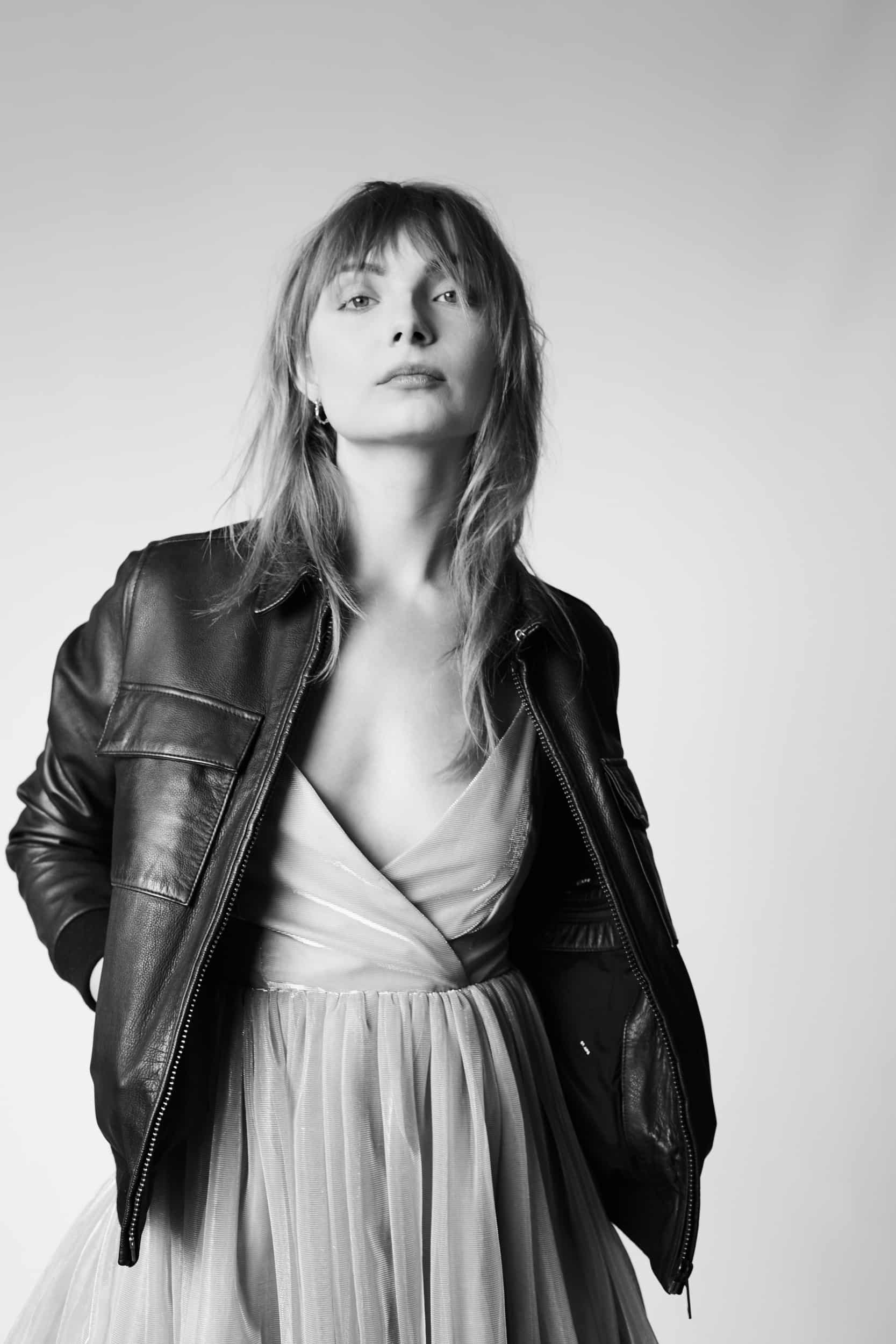
Leather
A natural artisanal material used since prehistoric times. Leather has a refined timeless luxury that no other material can replicate. Quality leather is an exquisite durable material that will offer countless years of comfort with a long-lasting sophisticated aesthetic. The leather upholstery looks amazing in your house and is the best choice for houses with pets and children, as it is easy to clean.
While leathers may seem similar on the surface, not all leathers are created equal. Leather can vary greatly in quality, how it looks, feels and how it performs. Every piece of natural leather has its own individual natural marks like scars, structure folds, brand marks and coloring. It is very resistant against manual strain but has a little light fastness and low rub fastness. These natural irregularities are not beauty defects, but evidence of authenticity and breathing live. The leather will age and change with you for a very long time if treated regularly and carefully according to the manufacture instructions.

CLEAN & CARE
Clean a leather furniture from time to time with a vacuum cleaner by using a soft furniture brush and occasionally, clean it with a damped cloth. Please do not experiment with unsuitable agents such as shoe polish, floor wax or cosmetics for example. When in doubt, consult a specialist. Never try to remove stains by rubbing them or with solvents (e.g. stain remover, turpentine, petrol)!
Please remove liquids immediately with an absorbable cloth. Do not treat grease stains in natural leather – they are often absorbed into the leather and become invisible after some weeks. Work on the remaining stains with a leather cleaner proposed by each manufacture. Selecting the most appropriate leather requires an understanding of the characteristics of each leather type. The leather type is established early in the production process, directed by the quality of the raw hide. This determines if the leather will end up as an aniline, semi-aniline, pigmented or corrected grain leather and the final cost of the material.
Aniline Leather – perfection of nature
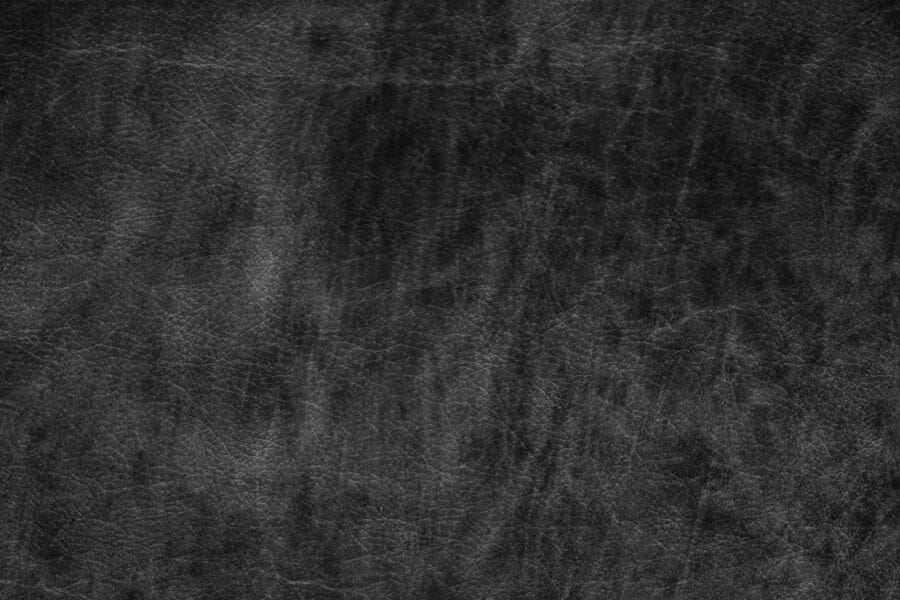 Pure aniline leathers are the most sensual of leather with all nature remarks. It wins through an inimitable grip, individual and natural visible appearance and high factor of comfort. Aniline leather is generally the most expensive of all leather types as only the very best raw hides can qualify for this type which attract a higher cost.
Pure aniline leathers are the most sensual of leather with all nature remarks. It wins through an inimitable grip, individual and natural visible appearance and high factor of comfort. Aniline leather is generally the most expensive of all leather types as only the very best raw hides can qualify for this type which attract a higher cost.
Aniline leather is completely permeated with color. The thinner the layer of pigments, the more breathable, less transpiration and the warmer the feeling of the leather but also the easier the color could fade.
With no protective layer or coating on the surface, aniline leathers boast superior seating comfort as they are able to breathe and absorb moisture. Also, it will develop a patina and improves with age. To avoid dehydrates it needs occasional treatment, as it is excepting of wax and oils totally untreated – nature you can see and feel.
Saddle leather is aniline leather oiled or waxed which is getting therefour quickly a patina layer while using – avery much desired effect.
Suede Leather, aslo called nubuk or vintage leather always have a ground surface. This results in a warm, velvety feel and a surface you can “write” on. On this surfaces natural characteristics may be processed with a unique result to your furniture.
Semi aniline leather
 Semi-aniline leather may sometimes be a better alternative for applications where heavy traffic, direct sunlight and regular maintenance play a part. This leather type can be a wonderful compromise for those who want to achieve a uniform look while still retaining the many beautiful natural characteristics of leather. Scratching will be far less obvious and color will remain more consistent over time.
Semi-aniline leather may sometimes be a better alternative for applications where heavy traffic, direct sunlight and regular maintenance play a part. This leather type can be a wonderful compromise for those who want to achieve a uniform look while still retaining the many beautiful natural characteristics of leather. Scratching will be far less obvious and color will remain more consistent over time.
Combining durability with the soft handle of natural leather, semi-aniline leathers are especially suited to commercial areas. The light pigment coating on semi-aniline hides is similar to a light layer of foundation makeup over your skin. It helps protect, smooth and create an even coloration while still letting the skin breathe underneath. Hence why breathability and seating comfort are still good for this leather type as their performance is not hindered by the light protective layer.
Pigmented leather
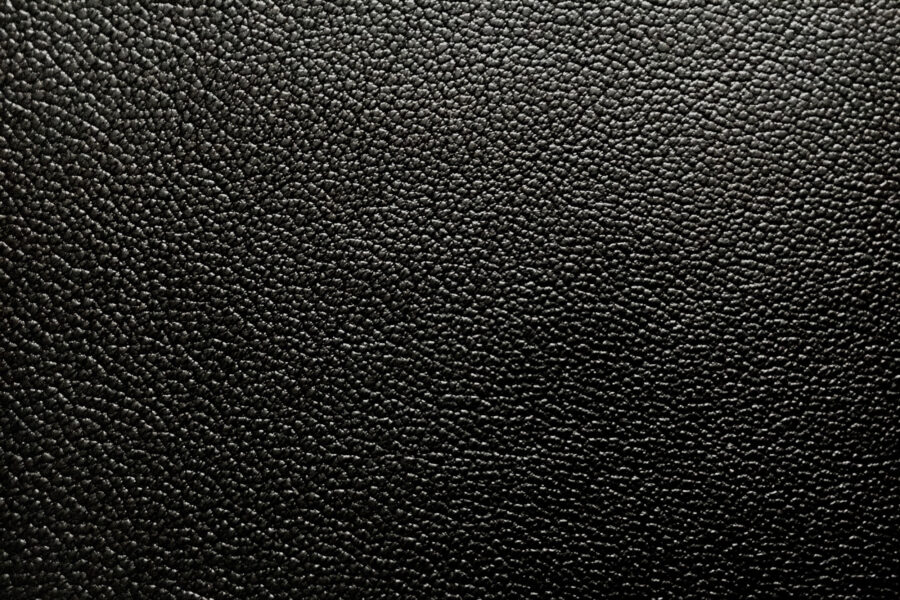 A pigmented, coated or protected leather is ideal for high traffic environments where the application requires more rigorous performance specifications. Pigmented leather is surface finished and solid dyed, has a layer of color and is usually embossed. A protective surface coating is applied over the pigment which gives the manufacturer greater control over the desired performance of the leather such as resistance to scuffing or fading. Unfortunately, it also brings the potential risk of surface cracking over time with it.
A pigmented, coated or protected leather is ideal for high traffic environments where the application requires more rigorous performance specifications. Pigmented leather is surface finished and solid dyed, has a layer of color and is usually embossed. A protective surface coating is applied over the pigment which gives the manufacturer greater control over the desired performance of the leather such as resistance to scuffing or fading. Unfortunately, it also brings the potential risk of surface cracking over time with it.
High yielding, easy to maintain and robust, pigmented leather displays excellent lightfastness and is the perfect choice for commercial furniture upholstery. As it is not as breathable as Aniline or Semi-Aniline, it feels more firm, cold in winter and hot in summer. Natural characteristics are corrected and hardly be seen. However, as a natural product this characteristic cannot be avoided in general.
Manmade leather
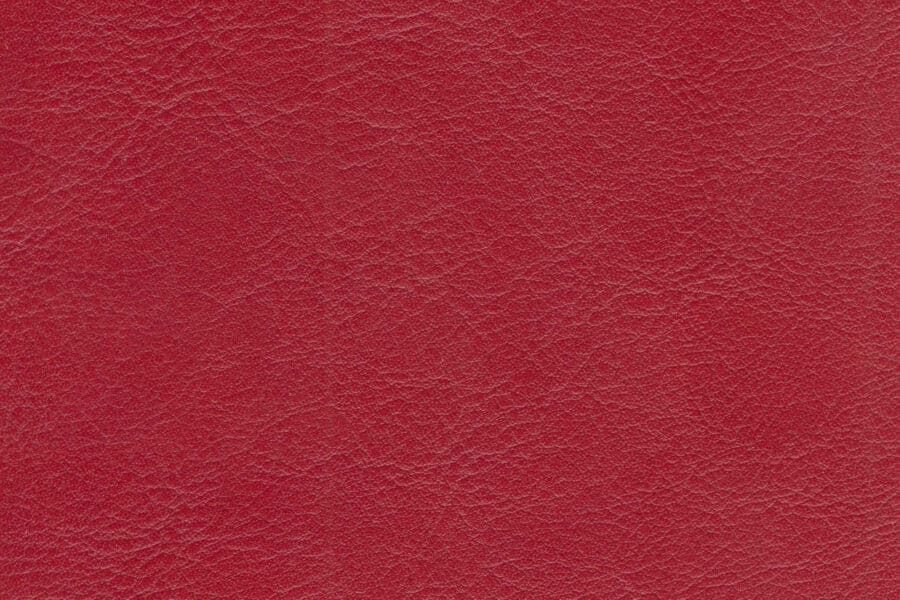 Manmade leather, as the name suggests, is a material that looks like leathe but cannot be declared as such, because it is not leather as defined in official standards. Since leather is an expensive material and because of the grain structure and natural markings and the irregular outer contour of a leather skin, the wastage costs incurred during the cutting process are very high. Attempts are constantly being made to develop materials that mimic the surface of leather. However, artificial leather is unable to match the technical properties of leather (breathability, haptics, water vapor permeability, etc.). Therefore, imitation leather remains as an inexpensive alternative to genuine leather.
Manmade leather, as the name suggests, is a material that looks like leathe but cannot be declared as such, because it is not leather as defined in official standards. Since leather is an expensive material and because of the grain structure and natural markings and the irregular outer contour of a leather skin, the wastage costs incurred during the cutting process are very high. Attempts are constantly being made to develop materials that mimic the surface of leather. However, artificial leather is unable to match the technical properties of leather (breathability, haptics, water vapor permeability, etc.). Therefore, imitation leather remains as an inexpensive alternative to genuine leather.
Aniline Leather – perfection of nature
 Pure aniline leathers are the most sensual of leather with all nature remarks. It wins through an inimitable grip, individual and natural visible appearance and high factor of comfort. Aniline leather is generally the most expensive of all leather types as only the very best raw hides can qualify for this type which attract a higher cost.
Pure aniline leathers are the most sensual of leather with all nature remarks. It wins through an inimitable grip, individual and natural visible appearance and high factor of comfort. Aniline leather is generally the most expensive of all leather types as only the very best raw hides can qualify for this type which attract a higher cost.
Aniline leather is completely permeated with color. The thinner the layer of pigments, the more breathable, less transpiration and the warmer the feeling of the leather but also the easier the color could fade.
With no protective layer or coating on the surface, aniline leathers boast superior seating comfort as they are able to breathe and absorb moisture. Also, it will develop a patina and improves with age. To avoid dehydrates it needs occasional treatment, as it is excepting of wax and oils totally untreated – nature you can see and feel.
Saddle leather is aniline leather oiled or waxed which is getting therefour quickly a patina layer while using – avery much desired effect.
Suede Leather, aslo called nubuk or vintage leather always have a ground surface. This results in a warm, velvety feel and a surface you can “write” on. On this surfaces natural characteristics may be processed with a unique result to your furniture.
Semi aniline leather
 Semi-aniline leather may sometimes be a better alternative for applications where heavy traffic, direct sunlight and regular maintenance play a part. This leather type can be a wonderful compromise for those who want to achieve a uniform look while still retaining the many beautiful natural characteristics of leather. Scratching will be far less obvious and color will remain more consistent over time.
Semi-aniline leather may sometimes be a better alternative for applications where heavy traffic, direct sunlight and regular maintenance play a part. This leather type can be a wonderful compromise for those who want to achieve a uniform look while still retaining the many beautiful natural characteristics of leather. Scratching will be far less obvious and color will remain more consistent over time.
Combining durability with the soft handle of natural leather, semi-aniline leathers are especially suited to commercial areas. The light pigment coating on semi-aniline hides is similar to a light layer of foundation makeup over your skin. It helps protect, smooth and create an even coloration while still letting the skin breathe underneath. Hence why breathability and seating comfort are still good for this leather type as their performance is not hindered by the light protective layer.
Pigmented leather
 A pigmented, coated or protected leather is ideal for high traffic environments where the application requires more rigorous performance specifications. Pigmented leather is surface finished and solid dyed, has a layer of color and is usually embossed. A protective surface coating is applied over the pigment which gives the manufacturer greater control over the desired performance of the leather such as resistance to scuffing or fading. Unfortunately, it also brings the potential risk of surface cracking over time with it.
A pigmented, coated or protected leather is ideal for high traffic environments where the application requires more rigorous performance specifications. Pigmented leather is surface finished and solid dyed, has a layer of color and is usually embossed. A protective surface coating is applied over the pigment which gives the manufacturer greater control over the desired performance of the leather such as resistance to scuffing or fading. Unfortunately, it also brings the potential risk of surface cracking over time with it.
High yielding, easy to maintain and robust, pigmented leather displays excellent lightfastness and is the perfect choice for commercial furniture upholstery. As it is not as breathable as Aniline or Semi-Aniline, it feels more firm, cold in winter and hot in summer. Natural characteristics are corrected and hardly be seen. However, as a natural product this characteristic cannot be avoided in general.
Manmade leather
 Manmade leather, as the name suggests, is a material that looks like leathe but cannot be declared as such, because it is not leather as defined in official standards. Since leather is an expensive material and because of the grain structure and natural markings and the irregular outer contour of a leather skin, the wastage costs incurred during the cutting process are very high. Attempts are constantly being made to develop materials that mimic the surface of leather. However, artificial leather is unable to match the technical properties of leather (breathability, haptics, water vapor permeability, etc.). Therefore, imitation leather remains as an inexpensive alternative to genuine leather.
Manmade leather, as the name suggests, is a material that looks like leathe but cannot be declared as such, because it is not leather as defined in official standards. Since leather is an expensive material and because of the grain structure and natural markings and the irregular outer contour of a leather skin, the wastage costs incurred during the cutting process are very high. Attempts are constantly being made to develop materials that mimic the surface of leather. However, artificial leather is unable to match the technical properties of leather (breathability, haptics, water vapor permeability, etc.). Therefore, imitation leather remains as an inexpensive alternative to genuine leather.
Wood
Timeless beauty genuine grown by nature. Each piece is unique in its structure and color, depending on the kind itself, the site of the tree, the climatic and soil conditions. Small knots, tears, irregular growth and grooves are proof of the authenticity of the material. Wood has a pleasant feel – it is nice to touch, to smell and it radiates a healthy living room climate.
QUALITY
The quality of a product is basically not dependent on whether a piece of furniture consists of wood materials or solid wood, but rather on the quality of the wood used. Wood changes with sunlight and light irradiation as well as different climatic conditions. The more it is exposed to natural conditions, the quicker these changes take place. Absolute uniformity in color and structure, for example between the plan sample and delivered item or the horizontal and vertical grain direction of the wood, can therefore not be guaranteed and is typical of the item.
CLEANING & MAINTENANCE
Depending on the wood and its finishing layer, little impacts, soft scratches and some stains can be equalized by treating the surface done by professionals. As an oiled surface isn’t sealed, they’re easier to spot repair. Please contact your local dealer for further information. Treat your furniture regularly according to the cleaning and maintenance instructions delivered with your furniture.
For everyday use take a soft slightly damped cloth to wipe the surface. Do not leave liquids or damp items on the top of wooden surface, nor put any hot or edgy item on any of your furniture. Also, protect the surface from adhesive labels and rubber coated objects. Do not use microfiber cloth, abrasive or aggressive detergents for clean (please check the labels of the common household products for contents before use!).
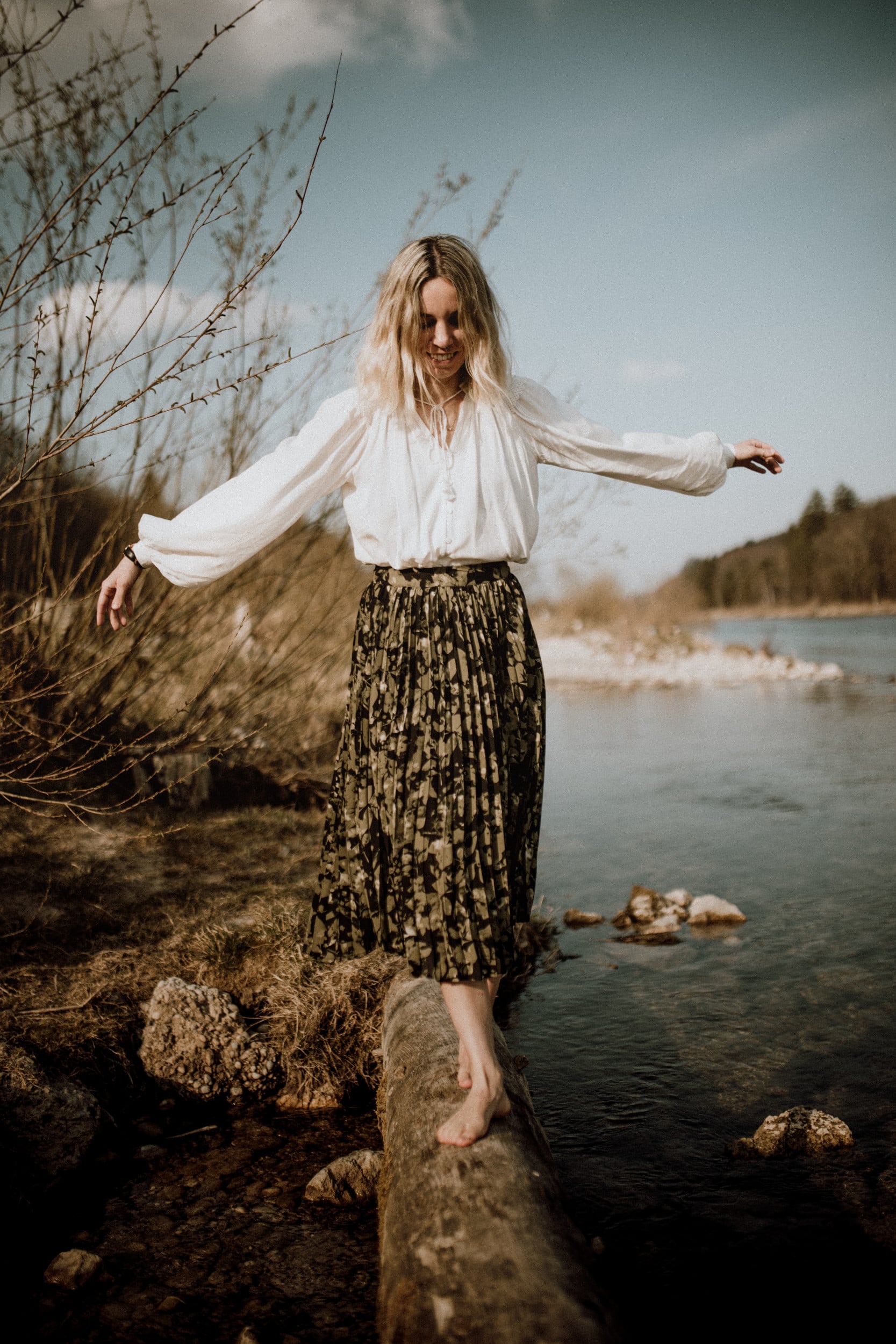
Wood

Timeless beauty genuine grown by nature. Each piece is unique in its structure and color, depending on the kind itself, the site of the tree, the climatic and soil conditions. Small knots, tears, irregular growth and grooves are proof of the authenticity of the material. Wood has a pleasant feel – it is nice to touch, to smell and it radiates a healthy living room climate.
QUALITY
The quality of a product is basically not dependent on whether a piece of furniture consists of wood materials or solid wood, but rather on the quality of the wood used. Wood changes with sunlight and light irradiation as well as different climatic conditions. The more it is exposed to natural conditions, the quicker these changes take place. Absolute uniformity in color and structure, for example between the plan sample and delivered item or the horizontal and vertical grain direction of the wood, can therefore not be guaranteed and is typical of the item.
CLEANING & MAINTENANCE
Depending on the wood and its finishing layer, little impacts, soft scratches and some stains can be equalized by treating the surface done by professionals. As an oiled surface isn’t sealed, they’re easier to spot repair. Please contact your local dealer for further information. Treat your furniture regularly according to the cleaning and maintenance instructions delivered with your furniture.
For everyday use take a soft slightly damped cloth to wipe the surface. Do not leave liquids or damp items on the top of wooden surface, nor put any hot or edgy item on any of your furniture. Also, protect the surface from adhesive labels and rubber coated objects. Do not use microfiber cloth, abrasive or aggressive detergents for clean (please check the labels of the common household products for contents before use!).
WOOD TYPES & SURFACES
Wood types and veneers from different tree trunks do not fit together structurally and as far as color is concerned. Deviations in color will occur during use at the latest. If there are additions of furniture pieces later, there will be clear differences in color between old and new pieces at the beginning, which will equalize by the time. Wood is a natural material that constantly absorbs and emit moisture. Furniture should therefore not be exposed to extremely high or too low humidity. Otherwise, the wood begins to work again, will be warped, shows open glued joints or starts to cracks. (Please find further information under air humidity).
Most wooden surfaces have a lacquer or oil finish. The choice is a matter of taste. During application, lacquer is applied to the surface and then UV cured to harden. It leaves an even slightly glossy layer on top. Oiled surfaces look rather natural and matt compared to the lacquered surfaces. Unlike oil, it seals the timber and gives it a better protection against humidity influences.
Lacquer is often considered more durable, although this is not necessarily the case. In the short to medium term lacquered surfaces are generally easier to maintain because you’re effectively cleaning a sealed surface. Oil, on the other hand, is applied and left to cure naturally, ingresses the wood grain and thus strengthens the fibers of the timber. Oiled surfaces require slightly more maintenance as oil needs replenishing periodically. But over time the protection builds up.
Solid wood
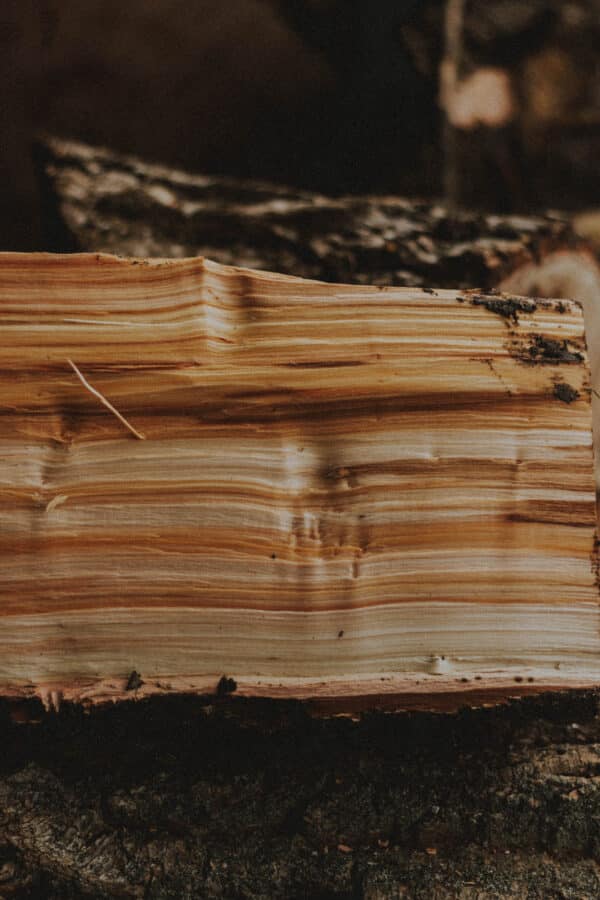 Solid wood furniture creates the best possible indoor atmosphere, has an anti-bacterial effect and prevents electrostatic dust charges. It helps to counteract allergies and contains no harmful substances in its natural form. The different varieties of wood, the different parts of a tree and the different processing result in different characteristics and create a large selection of all kinds of wood material. The most important for furniture business are Oak, Beech, Walnut and Ash.
Solid wood furniture creates the best possible indoor atmosphere, has an anti-bacterial effect and prevents electrostatic dust charges. It helps to counteract allergies and contains no harmful substances in its natural form. The different varieties of wood, the different parts of a tree and the different processing result in different characteristics and create a large selection of all kinds of wood material. The most important for furniture business are Oak, Beech, Walnut and Ash.
Oak
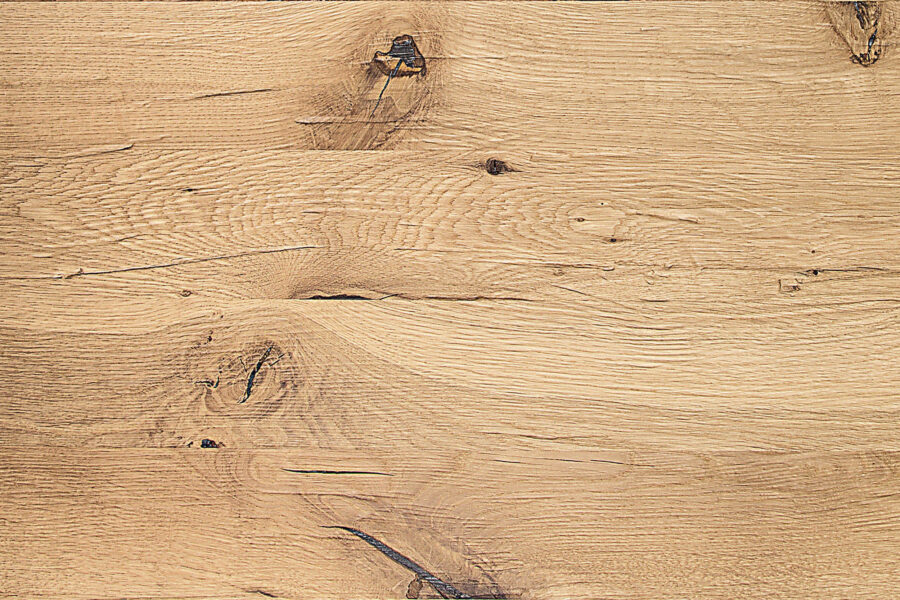 In furniture manufactures, the use of oak has a long tradition. Oak is a light yellowish-brown hard wood with a rougher structure than beech or cherry for example. The light oak wood darkens by the time. This alteration occurs so slowly, that it is hardly noticed.
In furniture manufactures, the use of oak has a long tradition. Oak is a light yellowish-brown hard wood with a rougher structure than beech or cherry for example. The light oak wood darkens by the time. This alteration occurs so slowly, that it is hardly noticed.
Through the different appearance of the distinctive parts there results a huge variety of properties and therefore names. Santana, Wild, Nature, Bianco, Timber, Ethno, Knotty, Tobacco, Milk and much more. The range goes from smooth even elegant surfaces through colored and growth characteristics appearance due to open cracks or branches and ends in rough finishes which has been sandblasted, sawn, brushed or planed without strong further treatment. Finally sanded, smoked or colored, oiled or lacquered to create a completely new modern and high quality look for oak wood. The origins are mostly in Germany, France, Croatia, Serbia, Italy, Hungary, Ukraine.
Beech
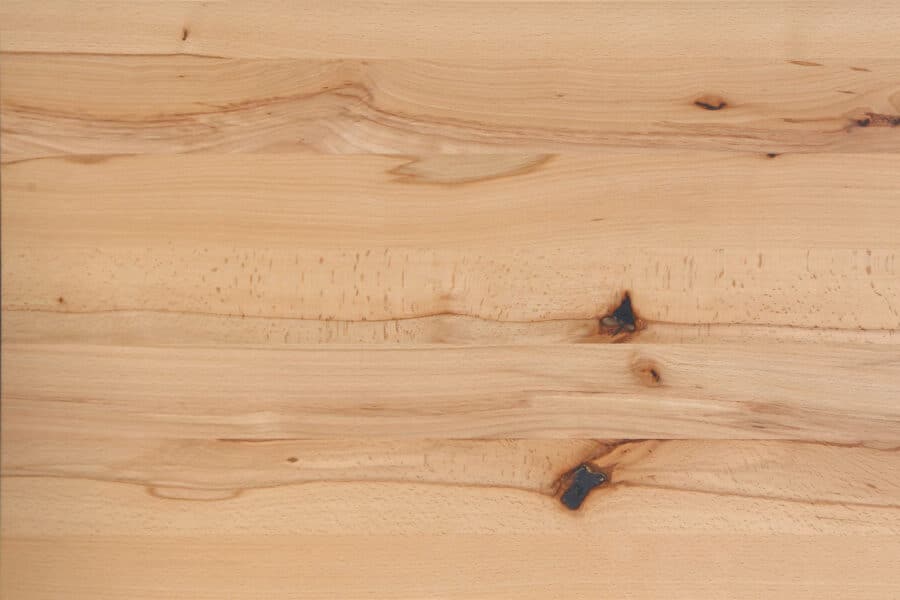 Heartwood is naturally interfused with knobs and tends to form cracks. Qualitatively, the heartwood of red beech is almost equivalent to white beech wood, but its appearance is much more individual and exclusive. From reef beech the core is used, due to its brownish edge, dominating the characteristics. Even after processing reef beech has the tendency to slightly wrap.
Heartwood is naturally interfused with knobs and tends to form cracks. Qualitatively, the heartwood of red beech is almost equivalent to white beech wood, but its appearance is much more individual and exclusive. From reef beech the core is used, due to its brownish edge, dominating the characteristics. Even after processing reef beech has the tendency to slightly wrap.
Processing beech heartwood into decorative pieces of furniture requires much more care. When processing red beech heartwood for furniture, unique and singular color structures are formed. These properties were worked out through the appropriate cut of the core planks and through artificial drying of the wood to the average indoor climate of centrally heated rooms that is common nowadays. Characteristics like connation and color differences as well as the darker coloring are an expression of an organic manufacturing process and is consciously desired. They give structure beech furniture an unmistakable and unique appearance. The origin of beech wood is mostly Germany, France and Balkans.
Walnut
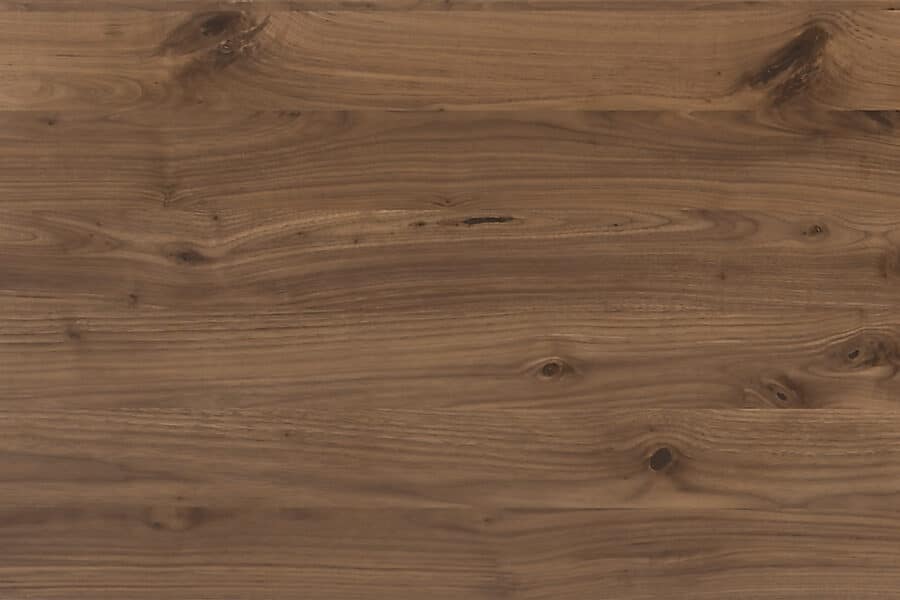 The brownish hard wood with its contrasting bright sapwood parts is an exclusive material with a very smooth surface. Thou the contrast will be aligning a bit by sunlight influences the surface shows a beautiful deepness.
The brownish hard wood with its contrasting bright sapwood parts is an exclusive material with a very smooth surface. Thou the contrast will be aligning a bit by sunlight influences the surface shows a beautiful deepness.
There are different kinds of walnut existing. “American Walnut” is more even, “Knotty Walnut” contains branches and tears threatened cracks and looks therefore rougher. Those individual characteristics reflecting the uniqueness of each piece of furniture.
Real wood veneer
Chipboard and MDF
WOOD TYPES & SURFACES
Wood types and veneers from different tree trunks do not fit together structurally and as far as color is concerned. Deviations in color will occur during use at the latest. If there are additions of furniture pieces later, there will be clear differences in color between old and new pieces at the beginning, which will equalize by the time. Wood is a natural material that constantly absorbs and emit moisture. Furniture should therefore not be exposed to extremely high or too low humidity. Otherwise, the wood begins to work again, will be warped, shows open glued joints or starts to cracks. (Please find further information under air humidity).
Most wooden surfaces have a lacquer or oil finish. The choice is a matter of taste. During application, lacquer is applied to the surface and then UV cured to harden. It leaves an even slightly glossy layer on top. Oiled surfaces look rather natural and matt compared to the lacquered surfaces. Unlike oil, it seals the timber and gives it a better protection against humidity influences.
Lacquer is often considered more durable, although this is not necessarily the case. In the short to medium term lacquered surfaces are generally easier to maintain because you’re effectively cleaning a sealed surface. Oil, on the other hand, is applied and left to cure naturally, ingresses the wood grain and thus strengthens the fibers of the timber. Oiled surfaces require slightly more maintenance as oil needs replenishing periodically. But over time the protection builds up.
Solid wood
 Solid wood furniture creates the best possible indoor atmosphere, has an anti-bacterial effect and prevents electrostatic dust charges. It helps to counteract allergies and contains no harmful substances in its natural form. The different varieties of wood, the different parts of a tree and the different processing result in different characteristics and create a large selection of all kinds of wood material. The most important for furniture business are Oak, Beech, Walnut and Ash.
Solid wood furniture creates the best possible indoor atmosphere, has an anti-bacterial effect and prevents electrostatic dust charges. It helps to counteract allergies and contains no harmful substances in its natural form. The different varieties of wood, the different parts of a tree and the different processing result in different characteristics and create a large selection of all kinds of wood material. The most important for furniture business are Oak, Beech, Walnut and Ash.
Oak
 In furniture manufactures, the use of oak has a long tradition. Oak is a light yellowish-brown hard wood with a rougher structure than beech or cherry for example. The light oak wood darkens by the time. This alteration occurs so slowly, that it is hardly noticed.
In furniture manufactures, the use of oak has a long tradition. Oak is a light yellowish-brown hard wood with a rougher structure than beech or cherry for example. The light oak wood darkens by the time. This alteration occurs so slowly, that it is hardly noticed.
Through the different appearance of the distinctive parts there results a huge variety of properties and therefore names. Santana, Wild, Nature, Bianco, Timber, Ethno, Knotty, Tobacco, Milk and much more. The range goes from smooth even elegant surfaces through colored and growth characteristics appearance due to open cracks or branches and ends in rough finishes which has been sandblasted, sawn, brushed or planed without strong further treatment. Finally sanded, smoked or colored, oiled or lacquered to create a completely new modern and high quality look for oak wood. The origins are mostly in Germany, France, Croatia, Serbia, Italy, Hungary, Ukraine.
Beech
 Heartwood is naturally interfused with knobs and tends to form cracks. Qualitatively, the heartwood of red beech is almost equivalent to white beech wood, but its appearance is much more individual and exclusive. From reef beech the core is used, due to its brownish edge, dominating the characteristics. Even after processing reef beech has the tendency to slightly wrap.
Heartwood is naturally interfused with knobs and tends to form cracks. Qualitatively, the heartwood of red beech is almost equivalent to white beech wood, but its appearance is much more individual and exclusive. From reef beech the core is used, due to its brownish edge, dominating the characteristics. Even after processing reef beech has the tendency to slightly wrap.
Processing beech heartwood into decorative pieces of furniture requires much more care. When processing red beech heartwood for furniture, unique and singular color structures are formed. These properties were worked out through the appropriate cut of the core planks and through artificial drying of the wood to the average indoor climate of centrally heated rooms that is common nowadays. Characteristics like connation and color differences as well as the darker coloring are an expression of an organic manufacturing process and is consciously desired. They give structure beech furniture an unmistakable and unique appearance. The origin of beech wood is mostly Germany, France and Balkans.
Walnut
 The brownish hard wood with its contrasting bright sapwood parts is an exclusive material with a very smooth surface. Thou the contrast will be aligning a bit by sunlight influences the surface shows a beautiful deepness.
The brownish hard wood with its contrasting bright sapwood parts is an exclusive material with a very smooth surface. Thou the contrast will be aligning a bit by sunlight influences the surface shows a beautiful deepness.
There are different kinds of walnut existing. “American Walnut” is more even, “Knotty Walnut” contains branches and tears threatened cracks and looks therefore rougher. Those individual characteristics reflecting the uniqueness of each piece of furniture.
Real wood veneer
Chipboard and MDF
Lacquer
The choice of lacquer finishing will bring the whole range of color to your home. The surface is smooth as silk and modern. Lacquered surfaces correspond to the DIN-standards and strict regulations of health order. They are specially hardened to match high-quality standards.
On the technical side, lacquers can be among others water based, UV lacquer or nitro lacquer and is applied up to five times depending on the material. Treat matt lacquer carefully with a soft cloth (slightly damp leather) to avoid it becomes shiny. Glossy lacquer also needs to be cleaned with a clean soft cloth, otherwise remaining dust might damage the surface (slightly damp cotton cloth and one percent soap water).
Follow the care instructions delivered with each furniture. Do not use microfiber cloth nor aggressive cleaning agents which contains alcohol or solvent which damages the surface. Also avoid wax or abrasive agents to keep the wonderful appearance of your furniture. If your lacquered furniture is facing a small damage on the surface, repair sets are available with a vanish pencil. Please contact your local dealer for further information.
Lacquer
The choice of lacquer finishing will bring the whole range of color to your home. The surface is smooth as silk and modern. Lacquered surfaces correspond to the DIN-standards and strict regulations of health order. They are specially hardened to match high-quality standards.
On the technical side, lacquers can be among others water based, UV lacquer or nitro lacquer and is applied up to five times depending on the material. Treat matt lacquer carefully with a soft cloth (slightly damp leather) to avoid it becomes shiny. Glossy lacquer also needs to be cleaned with a clean soft cloth, otherwise remaining dust might damage the surface (slightly damp cotton cloth and one percent soap water).
Follow the care instructions delivered with each furniture. Do not use microfiber cloth nor aggressive cleaning agents which contains alcohol or solvent which damages the surface. Also avoid wax or abrasive agents to keep the wonderful appearance of your furniture. If your lacquered furniture is facing a small damage on the surface, repair sets are available with a vanish pencil. Please contact your local dealer for further information.
Stone & Ceramics
Beside wood, glass or lacquered surfaces ceramic and stone materials getting more common on furniture tops. They give a new modern impact and are highly resistance against external influences, even if they are not indestructible.
Nature Stone
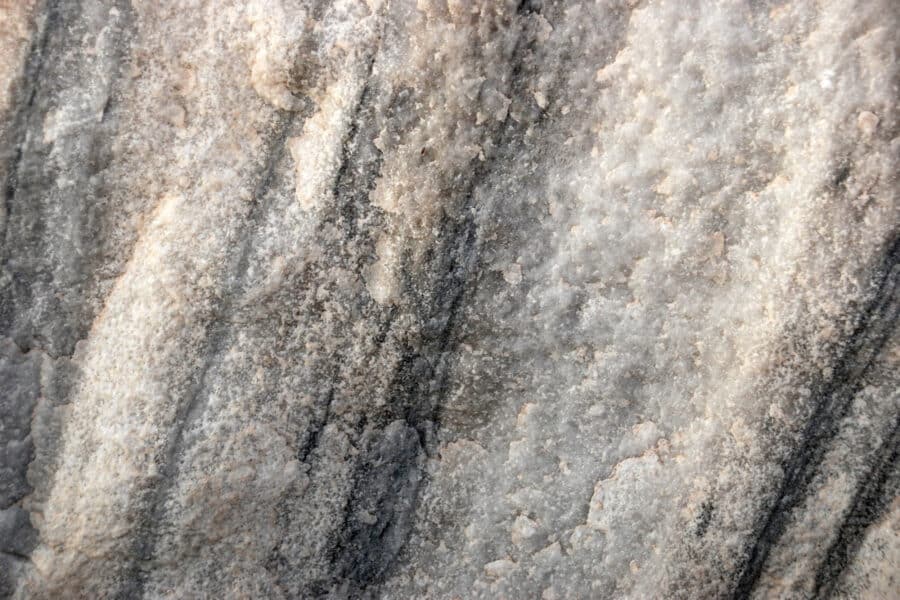 Beside wood, also stone creates a natural feeling in your ambience and reflecting a page from the history book of our earth. Formed millions of years ago on our planet, it is now found and developed with a great deal of effort in stone quarries all over the world. Materials like granite, marble, limestone, quartz, slate and more are found their way into our homes and are used nowadays for modern furniture tops. It is its past that created its great colorful luminescence and radiance.
Beside wood, also stone creates a natural feeling in your ambience and reflecting a page from the history book of our earth. Formed millions of years ago on our planet, it is now found and developed with a great deal of effort in stone quarries all over the world. Materials like granite, marble, limestone, quartz, slate and more are found their way into our homes and are used nowadays for modern furniture tops. It is its past that created its great colorful luminescence and radiance.
So not to affect the appearance of the surface, we reject synthetic treatment. The shine and the look are formed exclusively by processing with water and diamond polishing disks. Varying proportions of mat spots, hairline cracks and small craters are an unavoidable natural feature. Each slab is a unique specimen and thus singular in its appearance.
Cooling off tears (mast leaps) in individual large crystals or in the surface originate from the time of origin of the rock, caused by the different cooling off times of the different minerals. They could even be several centimeters long. They have mostly overgrown into crystals and have no influence on the static. An actual open crack in a slab could not bear the stress when processing.
NATURAL STONE CHARACTERISTICS
Natural stone, for example granite, has a high wear hardness and is weather resistant. In spite of this ability to resist, however, granite is not light fast. As with other materials, traces of use become visible. Surfaces with granite or slate have been impregnated during production. They are not lacquered and are therefore open pored. Impurities such as grease, oil etc. can be easily removed if treated immediately. However, the protective effect does not last long, since water vapor wanders into the granite and the effect of impregnation subsides with time. An annual re-impregnation, within 12 months for the first time after the purchase date, has to be done. Depending on the intensity of use, this can be done also be more frequently. Nevertheless, traces of use, such as stains from aggressive substances, for example, or a subsiding of the degree of shine, cannot be completely avoided.
Ceramic
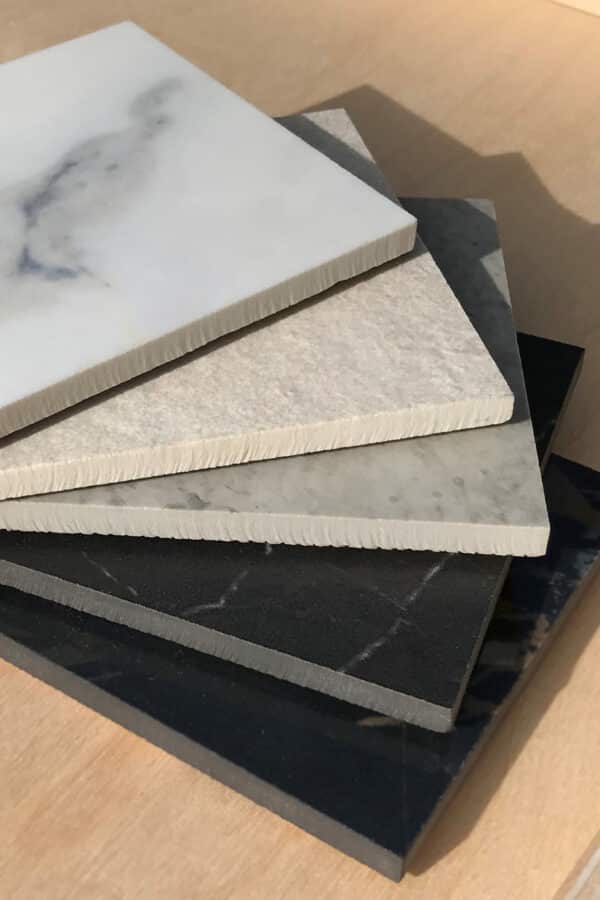 Ceramic is an inorganic natural product that do not release any harmful substances. Clay is extremely flexible and soft at its natural state and becomes rock-hard after the firing process. Its color changes according to the chromophore oxides contained in the clays and is UV resistant. It is an extremely versatile surface with a huge visual impact that is resilient, reliable, practical and durable at the same time. Ceramics are food safe, hygienic and very easy to take care of as liquids can´t penetrate the top and remain on the surface. This material is characterized by a small thickness, a good resistance to cleaning products, to chemicals and solvents. The only product that can damage ceramics is Hydrofluoric acid. It also resists to humidity, thermal shocks, to scratches and surface abrasions. Over the last few years resistant and innovative materials are emerged; one of them is glass-ceramics.
Ceramic is an inorganic natural product that do not release any harmful substances. Clay is extremely flexible and soft at its natural state and becomes rock-hard after the firing process. Its color changes according to the chromophore oxides contained in the clays and is UV resistant. It is an extremely versatile surface with a huge visual impact that is resilient, reliable, practical and durable at the same time. Ceramics are food safe, hygienic and very easy to take care of as liquids can´t penetrate the top and remain on the surface. This material is characterized by a small thickness, a good resistance to cleaning products, to chemicals and solvents. The only product that can damage ceramics is Hydrofluoric acid. It also resists to humidity, thermal shocks, to scratches and surface abrasions. Over the last few years resistant and innovative materials are emerged; one of them is glass-ceramics.
This material is made of one upper layer of ceramics, and a lower layer of glass, which makes it even more sturdy and resistant. The material resulting from this successful coupling is oil/liquid/fat-repellent, it is heat-resistant and acid-resistant. It is scratchproof, easy to clean, non-corrodible and non-toxic.
Ceramic surfaces are easy to clean. We suggest the use of neutral and alkaline detergents and the use of a soft cloth. Rinse with water and dry the surface to avoid the formation of stains, which might be caused by detergents residues. Make sure that no hot, too heavy, sharp edged, scratching or wet objects, that cause pressure points or edges, are placed on high quality furniture surfaces. Please immediately clean off spilled acidic liquids, such as fruit juices and alcohol, and do not let them penetrate. Never rub on the spot with great pressure. Please always observe the manufacturer’s instructions for the product!
Stone & Ceramics
Nature Stone
 Beside wood, also stone creates a natural feeling in your ambience and reflecting a page from the history book of our earth. Formed millions of years ago on our planet, it is now found and developed with a great deal of effort in stone quarries all over the world. Materials like granite, marble, limestone, quartz, slate and more are found their way into our homes and are used nowadays for modern furniture tops. It is its past that created its great colorful luminescence and radiance.
Beside wood, also stone creates a natural feeling in your ambience and reflecting a page from the history book of our earth. Formed millions of years ago on our planet, it is now found and developed with a great deal of effort in stone quarries all over the world. Materials like granite, marble, limestone, quartz, slate and more are found their way into our homes and are used nowadays for modern furniture tops. It is its past that created its great colorful luminescence and radiance.
So not to affect the appearance of the surface, we reject synthetic treatment. The shine and the look are formed exclusively by processing with water and diamond polishing disks. Varying proportions of mat spots, hairline cracks and small craters are an unavoidable natural feature. Each slab is a unique specimen and thus singular in its appearance.
Cooling off tears (mast leaps) in individual large crystals or in the surface originate from the time of origin of the rock, caused by the different cooling off times of the different minerals. They could even be several centimeters long. They have mostly overgrown into crystals and have no influence on the static. An actual open crack in a slab could not bear the stress when processing.
NATURAL STONE CHARACTERISTICS
Natural stone, for example granite, has a high wear hardness and is weather resistant. In spite of this ability to resist, however, granite is not light fast. As with other materials, traces of use become visible. Surfaces with granite or slate have been impregnated during production. They are not lacquered and are therefore open pored. Impurities such as grease, oil etc. can be easily removed if treated immediately. However, the protective effect does not last long, since water vapor wanders into the granite and the effect of impregnation subsides with time. An annual re-impregnation, within 12 months for the first time after the purchase date, has to be done. Depending on the intensity of use, this can be done also be more frequently. Nevertheless, traces of use, such as stains from aggressive substances, for example, or a subsiding of the degree of shine, cannot be completely avoided.
Ceramic
 Ceramic is an inorganic natural product that do not release any harmful substances. Clay is extremely flexible and soft at its natural state and becomes rock-hard after the firing process. Its color changes according to the chromophore oxides contained in the clays and is UV resistant. It is an extremely versatile surface with a huge visual impact that is resilient, reliable, practical and durable at the same time. Ceramics are food safe, hygienic and very easy to take care of as liquids can´t penetrate the top and remain on the surface. This material is characterized by a small thickness, a good resistance to cleaning products, to chemicals and solvents. The only product that can damage ceramics is Hydrofluoric acid. It also resists to humidity, thermal shocks, to scratches and surface abrasions. Over the last few years resistant and innovative materials are emerged; one of them is glass-ceramics.
Ceramic is an inorganic natural product that do not release any harmful substances. Clay is extremely flexible and soft at its natural state and becomes rock-hard after the firing process. Its color changes according to the chromophore oxides contained in the clays and is UV resistant. It is an extremely versatile surface with a huge visual impact that is resilient, reliable, practical and durable at the same time. Ceramics are food safe, hygienic and very easy to take care of as liquids can´t penetrate the top and remain on the surface. This material is characterized by a small thickness, a good resistance to cleaning products, to chemicals and solvents. The only product that can damage ceramics is Hydrofluoric acid. It also resists to humidity, thermal shocks, to scratches and surface abrasions. Over the last few years resistant and innovative materials are emerged; one of them is glass-ceramics.
This material is made of one upper layer of ceramics, and a lower layer of glass, which makes it even more sturdy and resistant. The material resulting from this successful coupling is oil/liquid/fat-repellent, it is heat-resistant and acid-resistant. It is scratchproof, easy to clean, non-corrodible and non-toxic.
Ceramic surfaces are easy to clean. We suggest the use of neutral and alkaline detergents and the use of a soft cloth. Rinse with water and dry the surface to avoid the formation of stains, which might be caused by detergents residues. Make sure that no hot, too heavy, sharp edged, scratching or wet objects, that cause pressure points or edges, are placed on high quality furniture surfaces. Please immediately clean off spilled acidic liquids, such as fruit juices and alcohol, and do not let them penetrate. Never rub on the spot with great pressure. Please always observe the manufacturer’s instructions for the product!
Glass
Color glass
Frosted glass
Safety glass

Glass

Color glass
Frosted glass
Safety glass
Rugs & Carpets
Rugs and carpets can be made of different types of materials for instance wool, polyester, acrylic or blends. Due to the manufacturing process of cutting or shorn pile will lose fibers over the first few weeks. These are the remaining ends of fibers that were cut during production and peeling off. They can easily be removed with a vacuum cleaner with no impact of the quality on your carpet. Threads that are loose or stick up have to be cut with a scissor. Do not pull those as it will loosen the sub tissue.
Leather carpets, intense colored and dark colored carpets special placed on bright or sensitive surfaces like wood or natural stone floors should get a protection layer like an anti slip matt underneath to avoid off coloring. Sunlight and also wet cleaning can have this effect to react between the carpet and the surface underneath. Also, sunlight might bleach the carpet. Furniture placed on top of the carpet might remain pressure spots.
Rugs & Carpets
Rugs and carpets can be made of different types of materials for instance wool, polyester, acrylic or blends. Due to the manufacturing process of cutting or shorn pile will lose fibers over the first few weeks. These are the remaining ends of fibers that were cut during production and peeling off. They can easily be removed with a vacuum cleaner with no impact of the quality on your carpet. Threads that are loose or stick up have to be cut with a scissor. Do not pull those as it will loosen the sub tissue.
Leather carpets, intense colored and dark colored carpets special placed on bright or sensitive surfaces like wood or natural stone floors should get a protection layer like an anti slip matt underneath to avoid off coloring. Sunlight and also wet cleaning can have this effect to react between the carpet and the surface underneath. Also, sunlight might bleach the carpet. Furniture placed on top of the carpet might remain pressure spots.
Inspiration
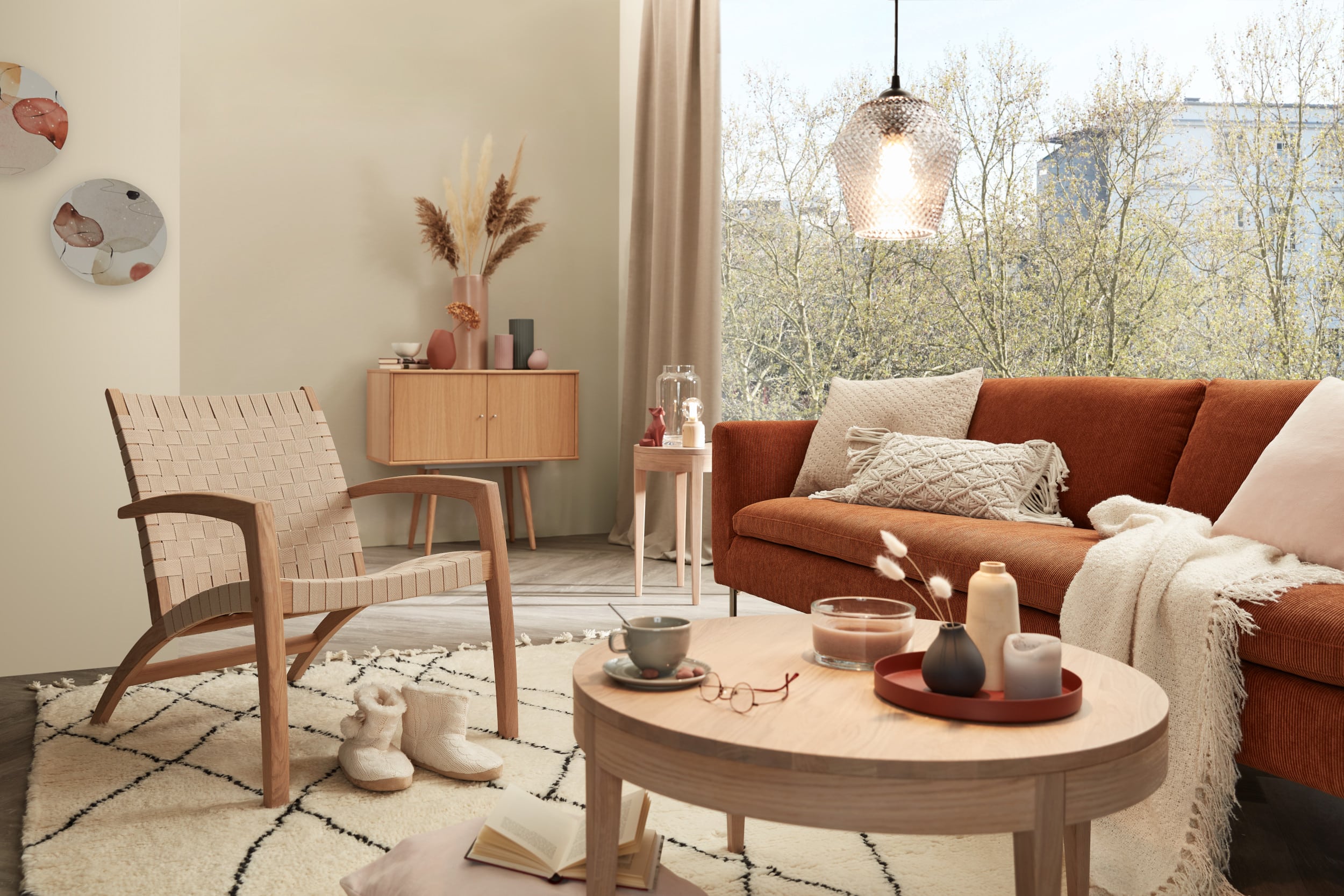
NATURAL
Natural materials make the difference and you can notice it immediately. The material interacts with the person and transports a homely feeling of life.

MODERN
Colors influence our living spaces like no other factor. With our products, you can design surfaces individually and also set exciting color accents.
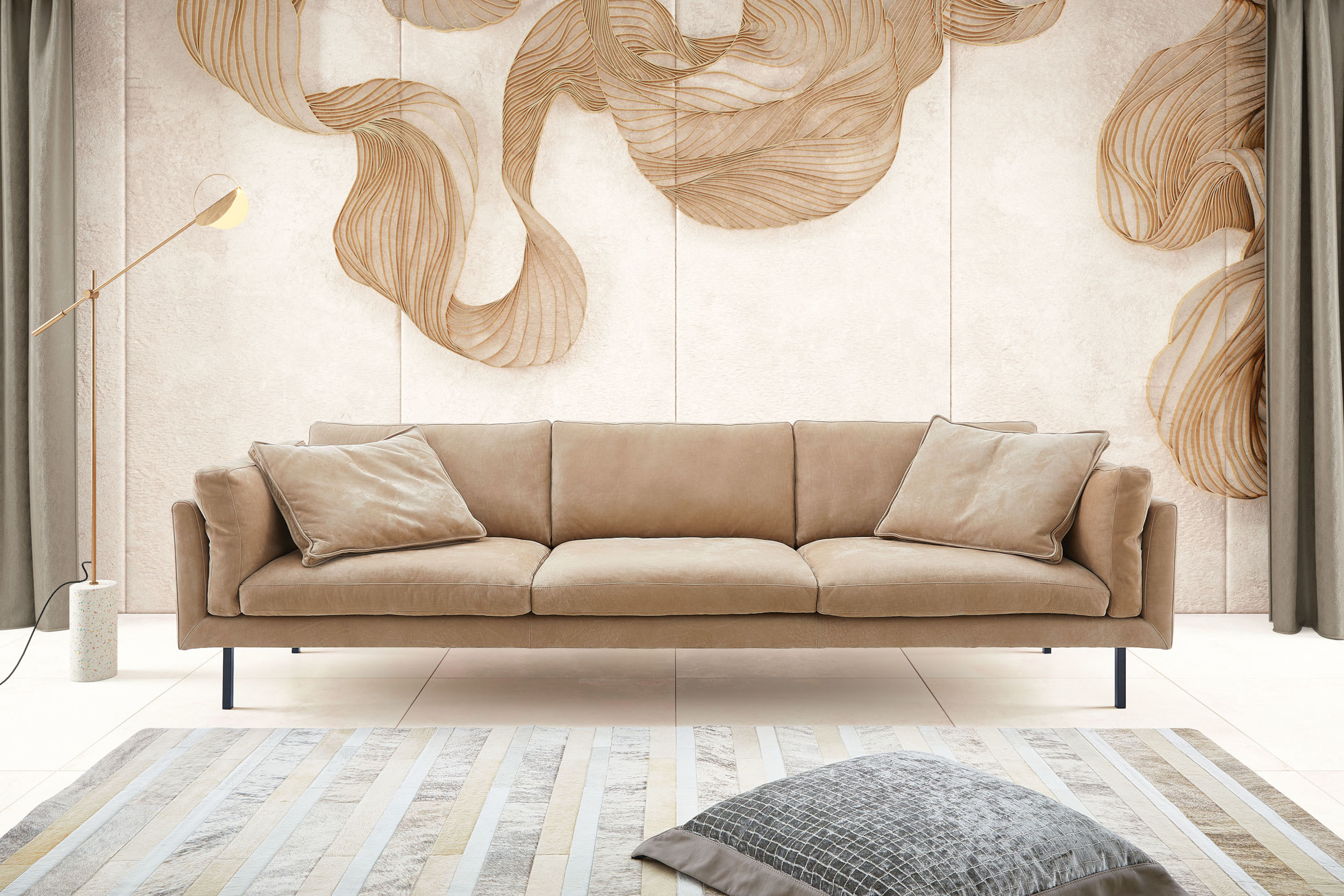
ELEGANT
Comfortable, bright and modern. Matching accessories emphasize the simple but well-formed elegance of the furniture. The focus is on the design and exclusive quality of the timeless Konzept Haus furniture.

INTERIOR DESIGN
Service
YOUR INTERIOR DESIGN BY KONZEPT HAUS
Your happiness is the top priority of our interior designers. Tailored to your personal style and budget, you will receive a high-quality, customized 3D concept.
Visit us in our KONZEPT HAUS store or our stylists will come to your home. Make an appointment with us now!
CREATE YOUR KOLLEKTION
Store Locator
You have found your favorite piece of furniture at our store or you want to take advantage of our interior design service? With the KONZEPT HAUS Store Locator you can quickly and easily find the nearest store in your area.
Find your nearest KONZEPT HAUS INTERIORS store now!
